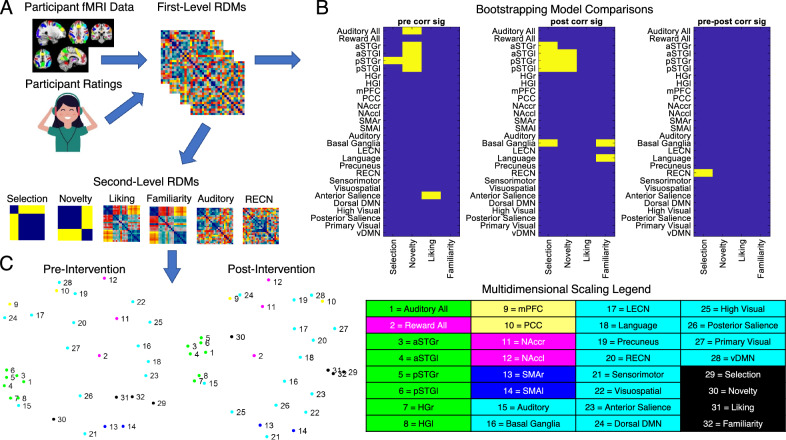Figure 5.
Representational similarity analysis. (A) Schematic of RSA processing pipeline. Participant-specific Ratings and task fMRI data are used to generate first-level representational dissimilarity matrices. First-Level RDMs are then used in 10,000-fold bootstrap resampling comparisons of models to functional RDMs for each participant. Resulting relatedness values are used in 50,000-fold t-max permutation testing (B) to determine significant (yellow) model-brain relationships at pre-intervention and post-intervention, as well as any significant effect of session (p < 0.05). First-Level RDMs are then averaged across participants to generate second-level RDMs, which are used to produce second order multidimensional scaling visualizations of RDM relatedness (C).

